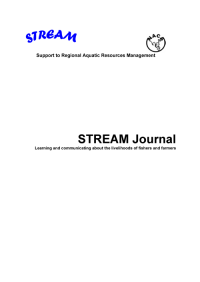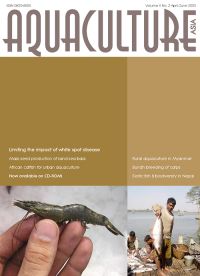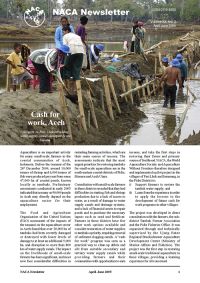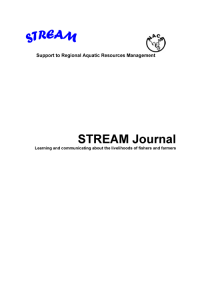In this issue: Changes in Jabarrah. Palu Hijau in the Banggai Islands - using knowledge for change. Three stories from Nepal. Me and my work. Livelihoods approaches - skills learned, applied and shared. About the STREAM Journal. About STREAM. This edition is also available in Ilonggo and Vietnamese.
In this issue:
Rural aquaculture in Myanmar. Bundh breeding of carps: A simple technique from West Bengal. African catfish for peri-urban aquaculture in India. Responsible introduction of alien fish. Collection of important data in shrimp farming. Use of epidemiological methods to limit the impact of white spot disease. Aquaclubs for shrimp health management. Indigenous fishing techniques by tribes of Arunachal Pradesh. Seed production of sand sea bass Psammoperca welgenensis. Marine fish health issues.
In this issue:
Cash for work, Aceh. HRH Chulabhorn opens new molecular genetics laboratory, Thailand. Aquatic epidemiology training. STREAM Regional Conference and BMP Workshop. Dr Modadugu V. Gupta awarded the 2005 World Food Prize. Study program on marine aquaculture and seafood markets in southern China, 2005. The third Regional Grouper Hatchery Production Training Course.
In this issue: Young people taking bolder steps. Providing a venue for voices to be heard. Rehabilitation of a bundu pond - STREAM's initiative and DOF's action. Coastal resources utilisation and conservation issues in Cox's Bazar, Bangladesh. People, fish and reefs - a livelihoods learning curve. Understanding the marine ornamental trade and its impact on the livelihoods of poor stakeholders in the Philippines. About the STREAM Journal. About STREAM. This edition is also available in Ilonggo and Vietnamese.




